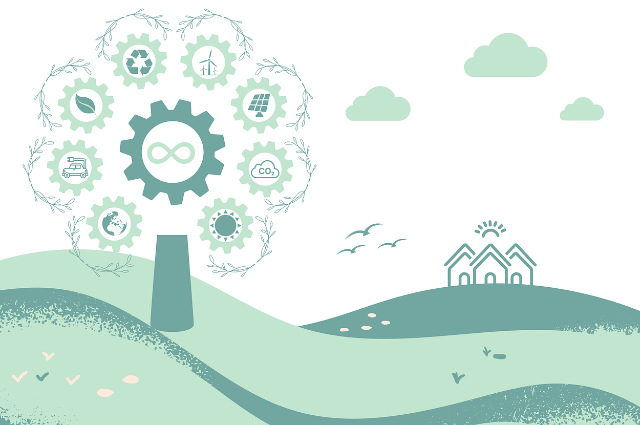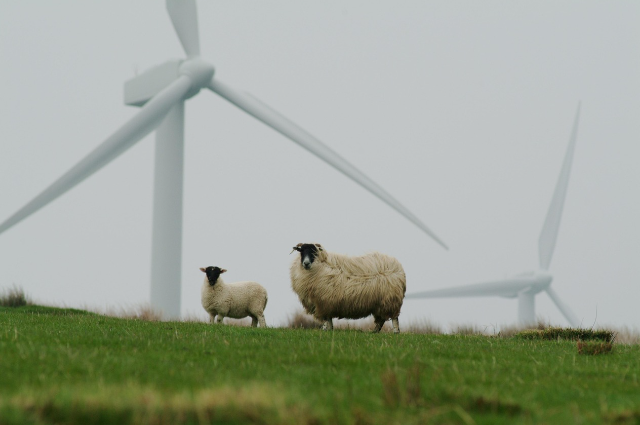
Image by Rosy / Bad Homburg / Germany from Pixabay
For decades, the debate over economic growth versus environmental protection has been framed as a zero-sum game: to protect the planet, we must slow down economic development, and to grow the economy, we must exploit natural resources. This narrative is both outdated and misleading. In the 21st century, we have increasingly clear evidence that economic strength and environmental sustainability can and must go hand in hand. Rather than being opposing forces, the two can support and strengthen each other, creating long-term resilience and well-being for societies across the globe.
The Traditional View: Growth at Nature’s Expense
Historically, industrial growth has been powered by the extensive use of fossil fuels, deforestation, overfishing, and large-scale pollution. These practices boosted economies in the short term but left a lasting negative impact on ecosystems, human health, and climate. The economic booms of the past often came with air and water pollution, habitat destruction, and health crises.
As a result, many policymakers and business leaders came to view environmental regulation as an obstacle to economic efficiency. Pollution control was seen as a cost. Renewable energy was seen as too expensive. Sustainable practices were often dismissed as anti-growth or idealistic.
But that mindset no longer fits the realities of today’s interconnected world or the pressing urgency of climate change.
The New Reality: Sustainability Drives Innovation
What was once viewed as a trade-off is now becoming a driver of innovation and competitiveness. Investing in clean technologies, renewable energy, green infrastructure, and sustainable agriculture not only helps protect the environment, but also creates new industries, new jobs, and new markets.
For example, the global renewable energy sector has seen explosive growth over the last two decades. Countries that invested early in solar and wind technologies—such as Germany, Denmark, and China—now reap the economic benefits of exporting those technologies and creating thousands of skilled jobs.
In India, the transition to solar energy has lowered the cost of electricity and opened up job opportunities in rural areas. Electric vehicles (EVs) are reducing fuel imports while stimulating investment in manufacturing and battery technology. These developments show that environmental responsibility can foster economic dynamism.
Green Jobs: Economic Growth Reimagined
One of the strongest arguments for a synergy between economic growth and environmental sustainability is the emergence of green jobs. These are roles that contribute directly to preserving or restoring environmental quality—such as renewable energy technicians, energy auditors, environmental engineers, and organic farmers.
According to the International Labour Organization (ILO), transitioning to a green economy could generate over 24 million new jobs globally by 2030. That includes sectors like public transport, recycling, energy efficiency, and sustainable forestry. By shifting toward clean industries, we are not just avoiding environmental damage—we’re creating a resilient economic foundation for future generations.
Smart Regulation: Guiding Markets Toward Sustainability
It’s a myth that regulation automatically stifles economic activity. In fact, well-designed environmental policies can encourage businesses to become more efficient, more competitive, and more innovative.
Take the example of fuel efficiency standards. When governments mandate higher fuel economy in vehicles, automakers are pushed to innovate. Over time, these innovations reduce fuel costs for consumers and reduce dependence on oil. Similarly, carbon pricing mechanisms like carbon taxes or cap-and-trade systems incentivize businesses to reduce emissions in cost-effective ways.
Environmental regulation is not about bureaucracy—it's about steering the market in a direction that aligns with long-term public interests.
Sustainable Business: Profits with Purpose

Image by keepwakin from Pixabay
Many businesses now recognize that long-term profitability depends on sustainable practices. Companies like Unilever, Tesla, and IKEA have embedded sustainability into their core business strategies—not just as corporate social responsibility, but as a business imperative.
Consumers are increasingly drawn to eco-conscious brands. Investors are shifting funds into ESG (Environmental, Social, Governance) portfolios. Sustainable supply chains are reducing waste, lowering energy costs, and building brand loyalty.
The bottom line is that doing good for the environment is no longer at odds with doing well financially. In fact, sustainable business practices are often more efficient, more resilient, and more profitable over the long term.
Environmental Degradation Is an Economic Threat
Conversely, ignoring environmental damage is economically reckless. Climate change, extreme weather events, water scarcity, and biodiversity loss all carry massive economic risks. The World Economic Forum has consistently listed environmental risks among the top threats to global stability.
Floods, droughts, and hurricanes can destroy infrastructure and disrupt supply chains. Pollution-related illnesses increase healthcare costs and lower worker productivity. Agricultural degradation threatens food security. These are not distant possibilities—they are realities already affecting millions.
A healthy environment is a foundation for a stable and thriving economy. Without clean air, safe water, and stable ecosystems, economic activity suffers.
Developing Nations: Opportunity, Not Obstacle
Some argue that developing countries cannot afford to focus on sustainability. However, the truth is that sustainable development is the only viable path forward for these nations. Clean energy is now cheaper than fossil fuels in many regions. Sustainable farming practices can improve yields while preserving soil health. Green urban planning reduces congestion and improves quality of life.
Countries like Costa Rica, Bhutan, and Ethiopia have shown that it’s possible to grow economically while maintaining ecological balance. With the right investments and policies, developing countries can leapfrog to cleaner, more sustainable technologies—avoiding the environmental mistakes made by industrialized nations.
The Role of Individuals and Communities
While government policies and corporate responsibility are crucial, individuals and communities also have a role to play. Choices like using public transport, conserving energy, reducing waste, and supporting local sustainable businesses all contribute to a healthier environment and a stronger economy.
Grassroots movements, citizen science, and community-based initiatives have demonstrated that collective action can lead to real, measurable change. When people are empowered to participate, sustainability becomes not just a top-down policy but a shared societal value.
Conclusion: Toward a New Economic Vision
The idea that we must choose between economic prosperity and a healthy environment is an outdated myth. In truth, the two are deeply interconnected. We don’t have to sacrifice one for the other—we can build an economy that is both strong and sustainable.
The future lies in embracing innovation, green technology, fair regulation, and inclusive development. It lies in recognizing that long-term economic success depends on the health of our ecosystems and communities. By shifting our mindset and policies, we can create a world where the economy thrives not in spite of the environment, but because we protect it.
